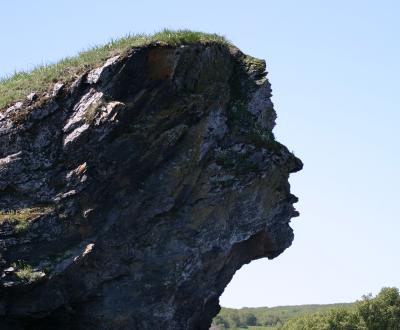Today’s readings are Jeremiah 22-23,26, Psalm 77 and James 2. We will focus on James 2:14-26.
Most Christians agree the Bible is very clear that works do not get you into Heaven and only the grace of Jesus dying on the cross can (Romans 3:23, 6:23). When you first read James 2, it can be confusing by making it sound like faith alone does not get you into Heaven. So, do works actually get you into Heaven then?
Diving in deeper can help us get a better understanding what James is saying. Check out James 2:19 where James tells us believing Jesus was who He said He was is not enough. Why?
You believe that God is one; you do well. Even the demons believe – and shudder!
James 2:19
Knowing Jesus is the Son of God does not gain you eternal life in Heaven…even the demons know.
We are currently doing an all-church study which is based off the book, Practicing the Way by John Mark Comer. Jesus told us to go and make disciples (Matthew 28:19-20). The word disciple can be confusing because it’s not used much outside the church. John Mark tells us we can gain better perspective for its meaning by looking at the Hebrew word which is talmid, and it can be translated as a student of a teacher. John Mark contends a better word for us to translate talmid into is actually apprentice. As an apprentice, your job is to be with your teacher, become like your teacher, and do as your teacher does.
So, John Mark says Christians should have 3 goals as an apprentice of Jesus.
- Be with Jesus.
- Become like Jesus.
- Do as Jesus did.
He argues spiritual formation is not an option. We are all following someone or something whether we realize it or not, and we are being spiritual formed by whoever or whatever we are following.
This gives us better context for James 2:14 which might initially have us raising our eyebrows when James says…
So also faith by itself, if it does not have works is dead.
James 2:14
To be saved by Jesus, you can’t just believe..the demons believed as James 2:19 says. If you are truly a follower and apprentice of Jesus spending time with Him..then you will become more like Jesus and do as he did. It is by works that your faith becomes active and fully complete. James speaks to this and gives the example of Abraham in James 2:22.
You see that faith was active along with his works, and faith was completed by his works.
James 2:22
He expands as we read on…
For as the body apart from the spirit is dead, so also faith apart from works is dead.
James 2:22
There you have it. You do not really have faith in Jesus if you are not completing works that demonstrate you are becoming more like Jesus and doing like He did.
Who or what are you following most closely that is shaping you?
Are you spending time with Jesus so that you are becoming more like Him and doing as He did?
Are you becoming an apprentice of Jesus?
I pray we will all reflect on these questions and let God speak into our hearts, telling us what He wants us to know.

